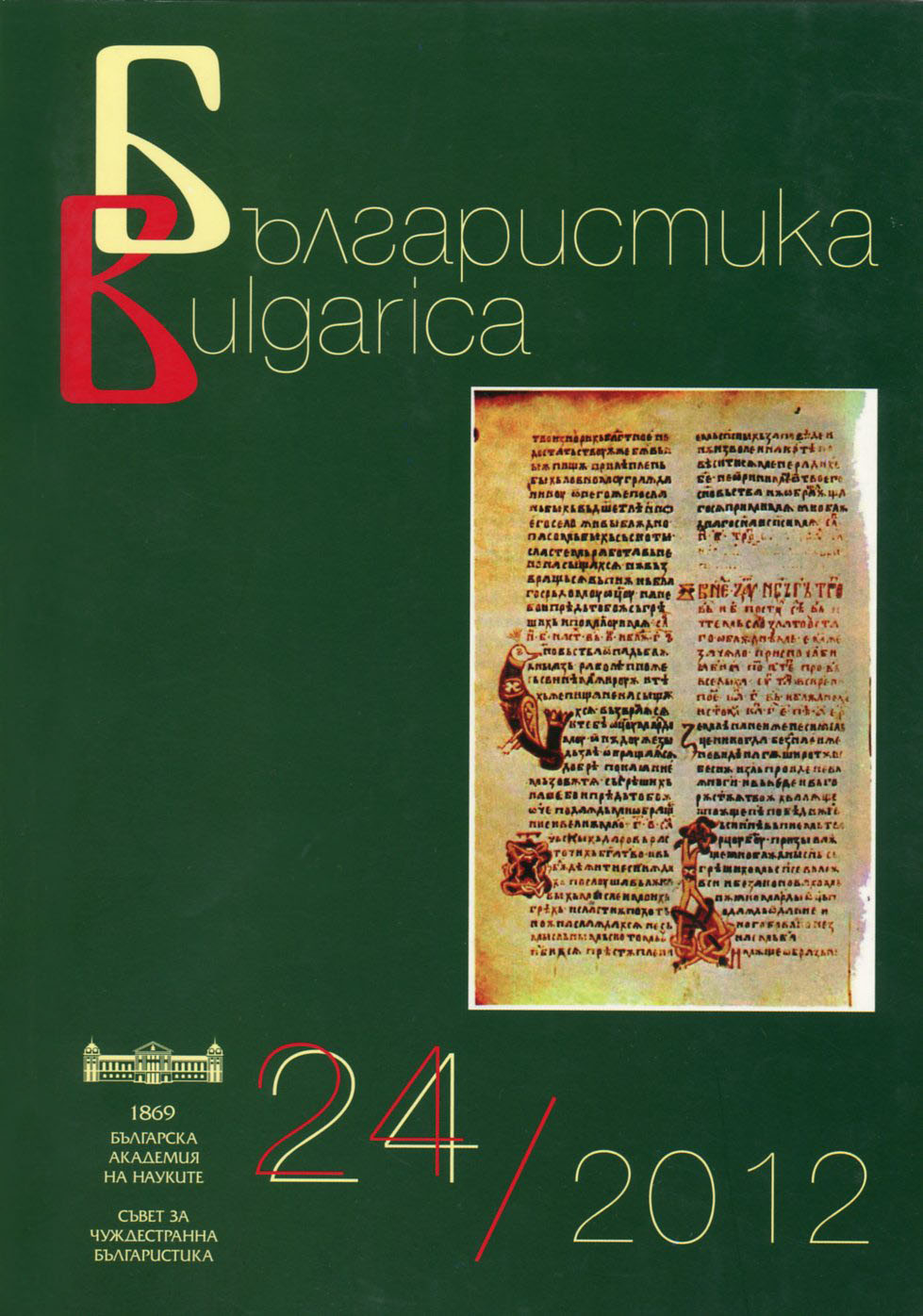
Книги 2011–2012 г.
Selected bibliography in the field of Bulgarian Studies published in the current year
More...We kindly inform you that, as long as the subject affiliation of our 300.000+ articles is in progress, you might get unsufficient or no results on your third level or second level search. In this case, please broaden your search criteria.

Selected bibliography in the field of Bulgarian Studies published in the current year
More...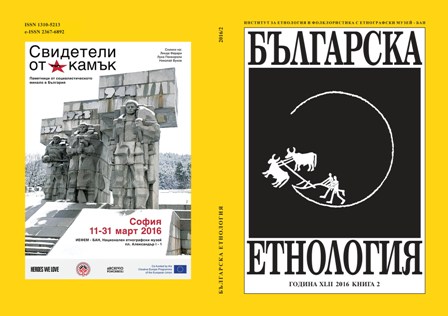

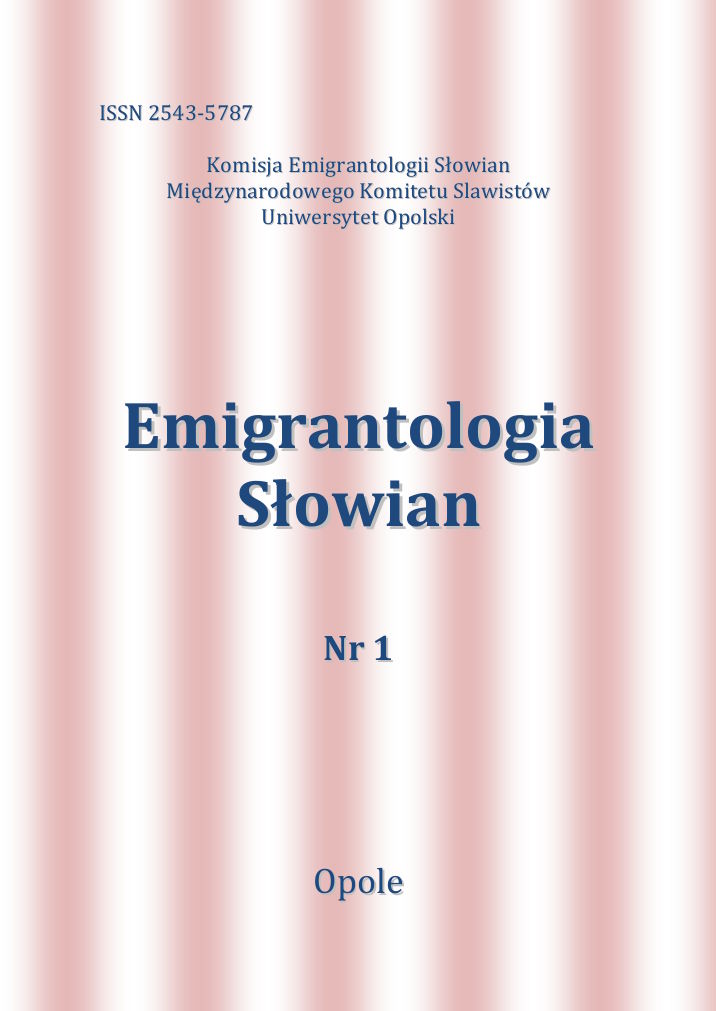
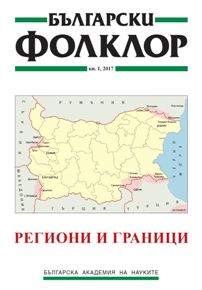
The article investigates Dobrudzha (in the political boundaries of Bulgaria and Romania) – a zone of interpenetration of identities and cultural practices among the population as a result of its long co-habitation within the Ottoman Empire on the Black sea shores and on the banks of the lower Danube River. The author uses a syncretic approach, including observation in situ allowing both for the pointing out of the “internal” multiplicity of practices connected to one or more denominations, as well as for the outlining of ‘trans-confessional’ and the ‘trans-ethnic’ similarities – healing practices, contacts with trees, stones and springs as the intermediaries of the divine. The aim is to investigate some details, as well as to reveal common places and diversity.
More...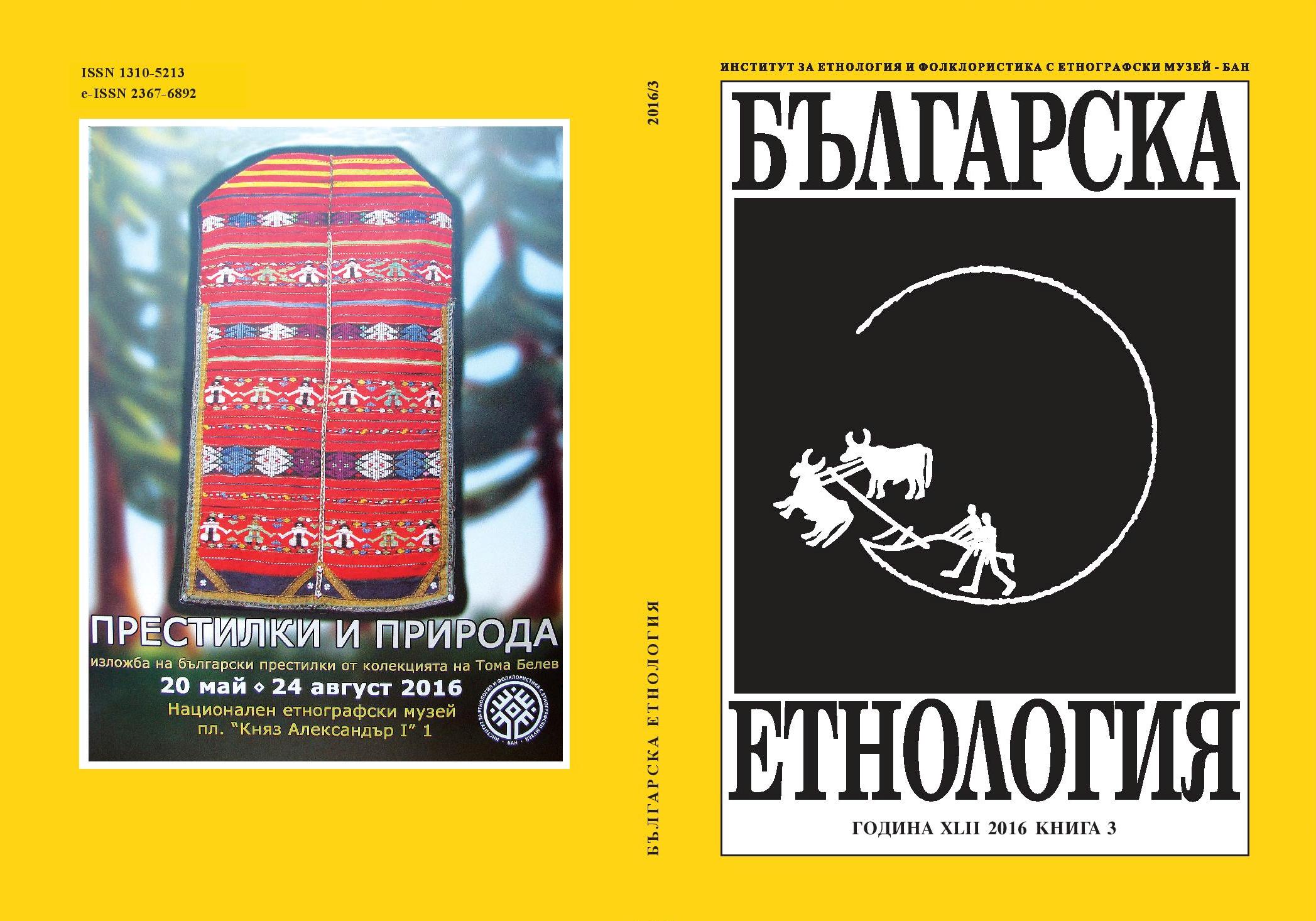
In the last decades, despite some pessimistic prognoses, shamanism is experiencingrevival. In the course of this process, shamans are adapting their practices to theclients’ expectations and new profile; as a result their own traditional view of theБългарска етнология, world is undergoing significant changes. One of the newly-emerged features ofcontemporary shamanism in Buryatia is dividing the inhabitants of the sacred worldinto „prestigious“ and „non-prestigious“ and offering them gifts corresponding tothis new status, all this with the active participation of the shamans themselves. Thearticle presents such practice which the author observed and assumes that there is alsoa process of transmission of respective ideals and values in the sphere of the sacredworld.
More...
The Areca nut is one of the products found in South Asia, Southeast Asia, andSouthern China. In China, being an exotic product that can be grown only in tropicalclimate, the Areca nut used to be highly appreciated and considered as a precious giftamongst the nobles in the past, especially during the Tang and Song dynasties. Whilein Vietnam, throughout its history, the Areca nut, because of its inherent spiritualvalue, has been an indispensable object of sacrifice in Vietnamese ancestral worshipas well as their lifetime rituals such as weddings, funerals and during childbirth. Apartfrom being an essential offering in rituals and ceremonies, the Areca nut traditionallywas also a means of mobilizing Vietnamese people’s social interactions (includingcourting between young boys and young girls).After doing a short description on how the Areca nut was used as a gift and as asacrificial object respectively in China in the past and in Southeast Asia, this article,from a historical point of view and with the author’s first hand materials from herfieldwork in Vietnam, attempts to show and explain both why and how the Arecanut has been functioning as a core indispensable object in sacrifices as well as ritualsand also as a means of social interaction in Vietnam. Thus, the article emphasizesthe important role that the Areca nut plays in Vietnamese people’s spiritual life andculture.
More...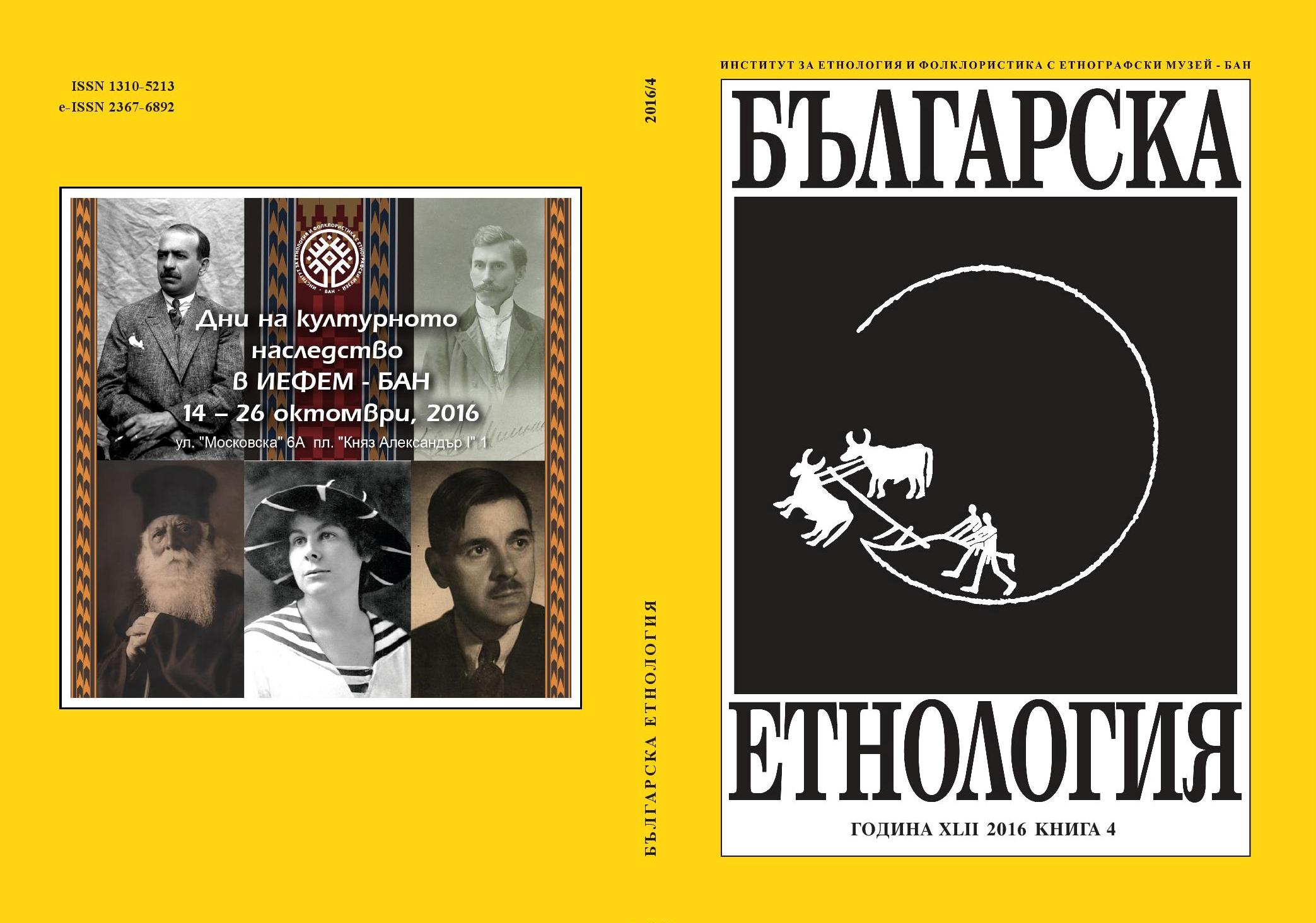
The article analyses the process of choosing different strategies of identification bythe Bulgarians in Ukraine. The present state of the “identification processes” againstthe background of the “war of memory” and the “invented traditions” places themamong the priority problems of science and politics.The subject of analysis are the specifics of the formation of collective memorywhich are at the root of the choice of identification strategy: commemorative practices,mechanisms for memorialization of the past, the correlation between the localgroup history and the national strategies of Bulgaria and Ukraine. The conclusionis that the choice of identification behaviour is influenced by the efficiency of thesocial adaptation under the specific historical circumstances. The social resources atdisposal of the group in any particular moment influence the choice of vectors of thecollective memory and predetermine the formation of defensive practices aiming topreserve the group.
More...


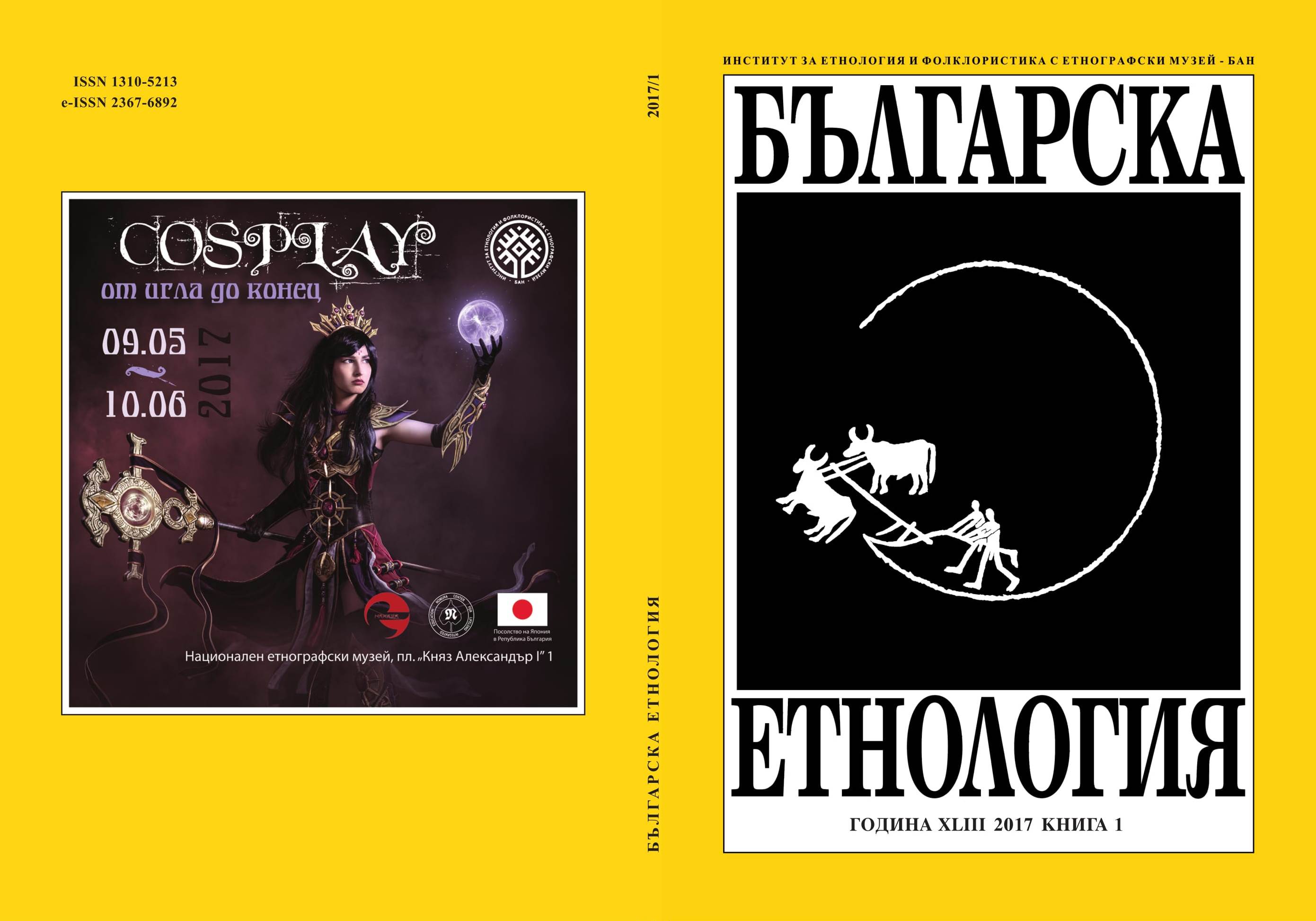
According to Wahrig Deustsches Woerterbuch the concept of the “road” refers to a place which you have to walk in order to obtain your wish, to change some life situation in a positive or negative way; there the desired result of the act is achieved. Therefore, in our traditional culture the road is the place where people most often perform all sorts of magical actions including “white” and “black” magic. The crossroad has the same meaning; in a sense, it outlines the model of the horizontal division of the world which finds expression in four main directions – east, west, north, south. The article shows some of the most common “white” magical actions which aim at positive results – mostly various healing practices against diseases such as “gorska mayka” and “vankashna bolest” as well as customs dedicated to the mythical master-guardian of the village such as “Kokosha cherkva” and customs against drought. The article also examines some “black” magical actions aiming at doing harm: “binding” of newlyweds, stealing the milk of somebody else’s cows.
More...
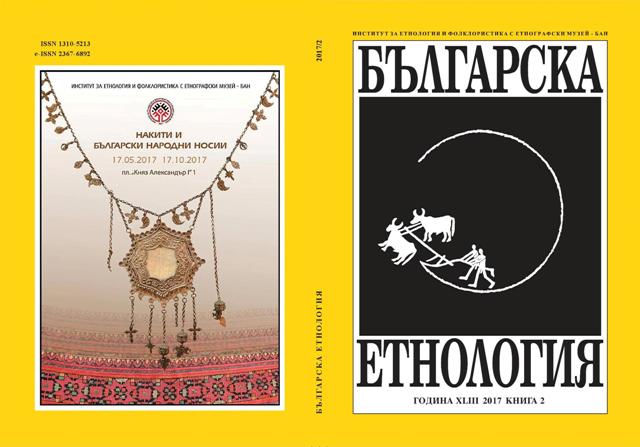
In the last years, the “Roma topic” attracts an increasing interest and takes a fopemost place in the public sphere of united Europe; hence, the Roma policies become a significant challenge on national and European level. Before analyzing the contemporary political discourses about the integration and the social inclusion of Roma, however, it is obligatory to know very well the previously existing state policies toward the Gypsies from the time of their arrival in Europe in the Middle Ages until today. Since a great number of the Roma population continues to live in the countries of Eastern Europe, the policies of the states which formed the “socialist camp” after World War II are very important. The analysis of the existing main political discourses about the Gypsies/Roma (and mostly of their results) should be the basis for the analysis of the contemporary national and European discourses about the Roma policies. Based on this, the achievements and the failures of those policies may find explanation and some prognoses about their results (or the lack of such) could be made.
More...
“The Gypsies are our own, domestic problem” is a phrase attributed to the long-term former head of the old communist Bulgarian government, Todor Zhivkov. The government policy towards the Gypsy minority in communist Bulgaria is one of inclusion to the Bulgarian way of life, and its implementation is carefully tailored to the specificities of Bulgaria as a country.It is a little known fact that towards the end of the 1940’s, the Bulgarian Gypsies suddenly turn from a “domestic problem” to something much larger and thus become part of the great confrontation between the two world political camps divided by the Iron Curtain. This takes place during the emigration of the ethnic Bulgarian Turks which starts in 1948, and during which, applications for emigration are filed by both Bulgarian Turks and Muslim Bulgarian Gypsies. It is this latter ethnic minority that becomes the cause for a serious conflict between ‘communist Bulgaria’ and ‘capitalist Turkey’.This paper aims at following the events from the end of the 40’s until end of the 80‘s of the previous century as well as analyzing the consequences of the confrontation between the two neighbouring Balkan countries.
More...


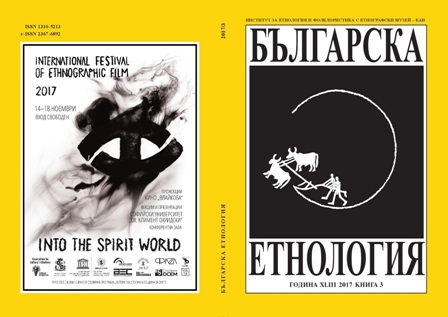
This research deals with two topics concerning mixed parentage rearing practices in Bulgaria. On the one hand, it is the naming the offspring with regard to the name giver(s) and principles of name-choosing, deriving from parent(s)’ cultural heritage and affected (or not) by the living-in social environment. On the other hand, there is the matter of the non-Bulgarian language acquisition, whose development is a question of micro managing of each of the families (and in many cases of each of the partners). Parents’ decisions, regarding these topics, set the manner in which others look at the mixed offspring, as well as how the children accept themselves as bearers of two cultural backgrounds.
More...